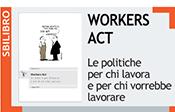Ultimi link in questa sezione
Come hanno potuto gli economisti sbagliare così?
I. MISTAKING BEAUTY FOR TRUTH
It’s hard to believe now, but not long ago economists were congratulating themselves over the success of their field. Those successes — or so they believed — were both theoretical and practical, leading to a golden era for the profession. On the theoretical side, they thought that they had resolved their internal disputes. Thus, in a 2008 paper titled “The State of Macro” (that is, macroeconomics, the study of big-picture issues like recessions), Olivier Blanchard of M.I.T., now the chief economist at the International Monetary Fund, declared that “the state of macro is good.” The battles of yesteryear, he said, were over, and there had been a “broad convergence of vision.” And in the real world, economists believed they had things under control: the “central problem of depression-prevention has been solved,” declared Robert Lucas of the University of Chicago in his 2003 presidential address to the American Economic Association. In 2004, Ben Bernanke, a former Princeton professor who is now the chairman of the Federal Reserve Board, celebrated the Great Moderation in economic performance over the previous two decades, which he attributed in part to improved economic policy
Last year, everything came apart.
Few economists saw our current crisis coming, but this predictive failure was the least of the field’s problems. More important was the profession’s blindness to the very possibility of catastrophic failures in a market economy. During the golden years, financial economists came to believe that markets were inherently stable — indeed, that stocks and other assets were always priced just right. There was nothing in the prevailing models suggesting the possibility of the kind of collapse that happened last year. Meanwhile, macroeconomists were divided in their views. But the main division was between those who insisted that free-market economies never go astray and those who believed that economies may stray now and then but that any major deviations from the path of prosperity could and would be corrected by the all-powerful Fed. Neither side was prepared to cope with an economy that went off the rails despite the Fed’s best efforts.
And in the wake of the crisis, the fault lines in the economics profession have yawned wider than ever. Lucas says the Obama administration’s stimulus plans are “schlock economics,” and his Chicago colleague John Cochrane says they’re based on discredited “fairy tales.” In response, Brad DeLong of the University of California, Berkeley, writes of the “intellectual collapse” of the Chicago School, and I myself have written that comments from Chicago economists are the product of a Dark Age of macroeconomics in which hard-won knowledge has been forgotten.
What happened to the economics profession? And where does it go from here?
As I see it, the economics profession went astray because economists, as a group, mistook beauty, clad in impressive-looking mathematics, for truth. Until the Great Depression, most economists clung to a vision of capitalism as a perfect or nearly perfect system. That vision wasn’t sustainable in the face of mass unemployment, but as memories of the Depression faded, economists fell back in love with the old, idealized vision of an economy in which rational individuals interact in perfect markets, this time gussied up with fancy equations. The renewed romance with the idealized market was, to be sure, partly a response to shifting political winds, partly a response to financial incentives. But while sabbaticals at the Hoover Institution and job opportunities on Wall Street are nothing to sneeze at, the central cause of the profession’s failure was the desire for an all-encompassing, intellectually elegant approach that also gave economists a chance to show off their mathematical prowess.
Unfortunately, this romanticized and sanitized vision of the economy led most economists to ignore all the things that can go wrong. They turned a blind eye to the limitations of human rationality that often lead to bubbles and busts; to the problems of institutions that run amok; to the imperfections of markets — especially financial markets — that can cause the economy’s operating system to undergo sudden, unpredictable crashes; and to the dangers created when regulators don’t believe in regulation.
It’s much harder to say where the economics profession goes from here. But what’s almost certain is that economists will have to learn to live with messiness. That is, they will have to acknowledge the importance of irrational and often unpredictable behavior, face up to the often idiosyncratic imperfections of markets and accept that an elegant economic “theory of everything” is a long way off. In practical terms, this will translate into more cautious policy advice — and a reduced willingness to dismantle economic safeguards in the faith that markets will solve all problems.
II. FROM SMITH TO KEYNES AND BACK
The birth of economics as a discipline is usually credited to Adam Smith, who published “The Wealth of Nations” in 1776. Over the next 160 years an extensive body of economic theory was developed, whose central message was: Trust the market. Yes, economists admitted that there were cases in which markets might fail, of which the most important was the case of “externalities” — costs that people impose on others without paying the price, like traffic congestion or pollution. But the basic presumption of “neoclassical” economics (named after the late-19th-century theorists who elaborated on the concepts of their “classical” predecessors) was that we should have faith in the market system.
This faith was, however, shattered by the Great Depression. Actually, even in the face of total collapse some economists insisted that whatever happens in a market economy must be right: “Depressions are not simply evils,” declared Joseph Schumpeter in 1934 — 1934! They are, he added, “forms of something which has to be done.” But many, and eventually most, economists turned to the insights of John Maynard Keynes for both an explanation of what had happened and a solution to future depressions.
Keynes did not, despite what you may have heard, want the government to run the economy. He described his analysis in his 1936 masterwork, “The General Theory of Employment, Interest and Money,” as “moderately conservative in its implications.” He wanted to fix capitalism, not replace it. But he did challenge the notion that free-market economies can function without a minder, expressing particular contempt for financial markets, which he viewed as being dominated by short-term speculation with little regard for fundamentals. And he called for active government intervention — printing more money and, if necessary, spending heavily on public works — to fight unemployment during slumps.
It’s important to understand that Keynes did much more than make bold assertions. “The General Theory” is a work of profound, deep analysis — analysis that persuaded the best young economists of the day. Yet the story of economics over the past half century is, to a large degree, the story of a retreat from Keynesianism and a return to neoclassicism. The neoclassical revival was initially led by Milton Friedman of the University of Chicago, who asserted as early as 1953 that neoclassical economics works well enough as a description of the way the economy actually functions to be “both extremely fruitful and deserving of much confidence.” But what about depressions?
Friedman’s counterattack against Keynes began with the doctrine known as monetarism. Monetarists didn’t disagree in principle with the idea that a market economy needs deliberate stabilization. “We are all Keynesians now,” Friedman once said, although he later claimed he was quoted out of context. Monetarists asserted, however, that a very limited, circumscribed form of government intervention — namely, instructing central banks to keep the nation’s money supply, the sum of cash in circulation and bank deposits, growing on a steady path — is all that’s required to prevent depressions. Famously, Friedman and his collaborator, Anna Schwartz, argued that if the Federal Reserve had done its job properly, the Great Depression would not have happened. Later, Friedman made a compelling case against any deliberate effort by government to push unemployment below its “natural” level (currently thought to be about 4.8 percent in the United States): excessively expansionary policies, he predicted, would lead to a combination of inflation and high unemployment — a prediction that was borne out by the stagflation of the 1970s, which greatly advanced the credibility of the anti-Keynesian movement.
Eventually, however, the anti-Keynesian counterrevolution went far beyond Friedman’s position, which came to seem relatively moderate compared with what his successors were saying. Among financial economists, Keynes’s disparaging vision of financial markets as a “casino” was replaced by “efficient market” theory, which asserted that financial markets always get asset prices right given the available information. Meanwhile, many macroeconomists completely rejected Keynes’s framework for understanding economic slumps. Some returned to the view of Schumpeter and other apologists for the Great Depression, viewing recessions as a good thing, part of the economy’s adjustment to change. And even those not willing to go that far argued that any attempt to fight an economic slump would do more harm than good.
Not all macroeconomists were willing to go down this road: many became self-described New Keynesians, who continued to believe in an active role for the government. Yet even they mostly accepted the notion that investors and consumers are rational and that markets generally get it right.
Of course, there were exceptions to these trends: a few economists challenged the assumption of rational behavior, questioned the belief that financial markets can be trusted and pointed to the long history of financial crises that had devastating economic consequences. But they were swimming against the tide, unable to make much headway against a pervasive and, in retrospect, foolish complacency.
III. PANGLOSSIAN FINANCE
In the 1930s, financial markets, for obvious reasons, didn’t get much respect. Keynes compared them to “those newspaper competitions in which the competitors have to pick out the six prettiest faces from a hundred photographs, the prize being awarded to the competitor whose choice most nearly corresponds to the average preferences of the competitors as a whole; so that each competitor has to pick, not those faces which he himself finds prettiest, but those that he thinks likeliest to catch the fancy of the other competitors.”
And Keynes considered it a very bad idea to let such markets, in which speculators spent their time chasing one another’s tails, dictate important business decisions: “When the capital development of a country becomes a by-product of the activities of a casino, the job is likely to be ill-done.”
By 1970 or so, however, the study of financial markets seemed to have been taken over by Voltaire’s Dr. Pangloss, who insisted that we live in the best of all possible worlds. Discussion of investor irrationality, of bubbles, of destructive speculation had virtually disappeared from academic discourse. The field was dominated by the “efficient-market hypothesis,” promulgated by Eugene Fama of the University of Chicago, which claims that financial markets price assets precisely at their intrinsic worth given all publicly available information. (The price of a company’s stock, for example, always accurately reflects the company’s value given the information available on the company’s earnings, its business prospects and so on.) And by the 1980s, finance economists, notably Michael Jensen of the Harvard Business School, were arguing that because financial markets always get prices right, the best thing corporate chieftains can do, not just for themselves but for the sake of the economy, is to maximize their stock prices. In other words, finance economists believed that we should put the capital development of the nation in the hands of what Keynes had called a “casino.”
It’s hard to argue that this transformation in the profession was driven by events. True, the memory of 1929 was gradually receding, but there continued to be bull markets, with widespread tales of speculative excess, followed by bear markets. In 1973-4, for example, stocks lost 48 percent of their value. And the 1987 stock crash, in which the Dow plunged nearly 23 percent in a day for no clear reason, should have raised at least a few doubts about market rationality.
These events, however, which Keynes would have considered evidence of the unreliability of markets, did little to blunt the force of a beautiful idea. The theoretical model that finance economists developed by assuming that every investor rationally balances risk against reward — the so-called Capital Asset Pricing Model, or CAPM (pronounced cap-em) — is wonderfully elegant. And if you accept its premises it’s also extremely useful. CAPM not only tells you how to choose your portfolio — even more important from the financial industry’s point of view, it tells you how to put a price on financial derivatives, claims on claims. The elegance and apparent usefulness of the new theory led to a string of Nobel prizes for its creators, and many of the theory’s adepts also received more mundane rewards: Armed with their new models and formidable math skills — the more arcane uses of CAPM require physicist-level computations — mild-mannered business-school professors could and did become Wall Street rocket scientists, earning Wall Street paychecks.
To be fair, finance theorists didn’t accept the efficient-market hypothesis merely because it was elegant, convenient and lucrative. They also produced a great deal of statistical evidence, which at first seemed strongly supportive. But this evidence was of an oddly limited form. Finance economists rarely asked the seemingly obvious (though not easily answered) question of whether asset prices made sense given real-world fundamentals like earnings. Instead, they asked only whether asset prices made sense given other asset prices. Larry Summers, now the top economic adviser in the Obama administration, once mocked finance professors with a parable about “ketchup economists” who “have shown that two-quart bottles of ketchup invariably sell for exactly twice as much as one-quart bottles of ketchup,” and conclude from this that the ketchup market is perfectly efficient.
But neither this mockery nor more polite critiques from economists like Robert Shiller of Yale had much effect. Finance theorists continued to believe that their models were essentially right, and so did many people making real-world decisions. Not least among these was Alan Greenspan, who was then the Fed chairman and a long-time supporter of financial deregulation whose rejection of calls to rein in subprime lending or address the ever-inflating housing bubble rested in large part on the belief that modern financial economics had everything under control. There was a telling moment in 2005, at a conference held to honor Greenspan’s tenure at the Fed. One brave attendee, Raghuram Rajan (of the University of Chicago, surprisingly), presented a paper warning that the financial system was taking on potentially dangerous levels of risk. He was mocked by almost all present — including, by the way, Larry Summers, who dismissed his warnings as “misguided.”
By October of last year, however, Greenspan was admitting that he was in a state of “shocked disbelief,” because “the whole intellectual edifice” had “collapsed.” Since this collapse of the intellectual edifice was also a collapse of real-world markets, the result was a severe recession — the worst, by many measures, since the Great Depression. What should policy makers do? Unfortunately, macroeconomics, which should have been providing clear guidance about how to address the slumping economy, was in its own state of disarray.
IV. THE TROUBLE WITH MACRO
“We have involved ourselves in a colossal muddle, having blundered in the control of a delicate machine, the working of which we do not understand. The result is that our possibilities of wealth may run to waste for a time — perhaps for a long time.” So wrote John Maynard Keynes in an essay titled “The Great Slump of 1930,” in which he tried to explain the catastrophe then overtaking the world. And the world’s possibilities of wealth did indeed run to waste for a long time; it took World War II to bring the Great Depression to a definitive end.
Why was Keynes’s diagnosis of the Great Depression as a “colossal muddle” so compelling at first? And why did economics, circa 1975, divide into opposing camps over the value of Keynes’s views?
I like to explain the essence of Keynesian economics with a true story that also serves as a parable, a small-scale version of the messes that can afflict entire economies. Consider the travails of the Capitol Hill Baby-Sitting Co-op.
This co-op, whose problems were recounted in a 1977 article in The Journal of Money, Credit and Banking, was an association of about 150 young couples who agreed to help one another by baby-sitting for one another’s children when parents wanted a night out. To ensure that every couple did its fair share of baby-sitting, the co-op introduced a form of scrip: coupons made out of heavy pieces of paper, each entitling the bearer to one half-hour of sitting time. Initially, members received 20 coupons on joining and were required to return the same amount on departing the group.
Unfortunately, it turned out that the co-op’s members, on average, wanted to hold a reserve of more than 20 coupons, perhaps, in case they should want to go out several times in a row. As a result, relatively few people wanted to spend their scrip and go out, while many wanted to baby-sit so they could add to their hoard. But since baby-sitting opportunities arise only when someone goes out for the night, this meant that baby-sitting jobs were hard to find, which made members of the co-op even more reluctant to go out, making baby-sitting jobs even scarcer. . . .
In short, the co-op fell into a recession.
O.K., what do you think of this story? Don’t dismiss it as silly and trivial: economists have used small-scale examples to shed light on big questions ever since Adam Smith saw the roots of economic progress in a pin factory, and they’re right to do so. The question is whether this particular example, in which a recession is a problem of inadequate demand — there isn’t enough demand for baby-sitting to provide jobs for everyone who wants one — gets at the essence of what happens in a recession.
Forty years ago most economists would have agreed with this interpretation. But since then macroeconomics has divided into two great factions: “saltwater” economists (mainly in coastal U.S. universities), who have a more or less Keynesian vision of what recessions are all about; and “freshwater” economists (mainly at inland schools), who consider that vision nonsense.
Freshwater economists are, essentially, neoclassical purists. They believe that all worthwhile economic analysis starts from the premise that people are rational and markets work, a premise violated by the story of the baby-sitting co-op. As they see it, a general lack of sufficient demand isn’t possible, because prices always move to match supply with demand. If people want more baby-sitting coupons, the value of those coupons will rise, so that they’re worth, say, 40 minutes of baby-sitting rather than half an hour — or, equivalently, the cost of an hours’ baby-sitting would fall from 2 coupons to 1.5. And that would solve the problem: the purchasing power of the coupons in circulation would have risen, so that people would feel no need to hoard more, and there would be no recession.
But don’t recessions look like periods in which there just isn’t enough demand to employ everyone willing to work? Appearances can be deceiving, say the freshwater theorists. Sound economics, in their view, says that overall failures of demand can’t happen — and that means that they don’t. Keynesian economics has been “proved false,” Cochrane, of the University of Chicago, says.
Yet recessions do happen. Why? In the 1970s the leading freshwater macroeconomist, the Nobel laureate Robert Lucas, argued that recessions were caused by temporary confusion: workers and companies had trouble distinguishing overall changes in the level of prices because of inflation or deflation from changes in their own particular business situation. And Lucas warned that any attempt to fight the business cycle would be counterproductive: activist policies, he argued, would just add to the confusion.
By the 1980s, however, even this severely limited acceptance of the idea that recessions are bad things had been rejected by many freshwater economists. Instead, the new leaders of the movement, especially Edward Prescott, who was then at the University of Minnesota (you can see where the freshwater moniker comes from), argued that price fluctuations and changes in demand actually had nothing to do with the business cycle. Rather, the business cycle reflects fluctuations in the rate of technological progress, which are amplified by the rational response of workers, who voluntarily work more when the environment is favorable and less when it’s unfavorable. Unemployment is a deliberate decision by workers to take time off.
Put baldly like that, this theory sounds foolish — was the Great Depression really the Great Vacation? And to be honest, I think it really is silly. But the basic premise of Prescott’s “real business cycle” theory was embedded in ingeniously constructed mathematical models, which were mapped onto real data using sophisticated statistical techniques, and the theory came to dominate the teaching of macroeconomics in many university departments. In 2004, reflecting the theory’s influence, Prescott shared a Nobel with Finn Kydland of Carnegie Mellon University.
Meanwhile, saltwater economists balked. Where the freshwater economists were purists, saltwater economists were pragmatists. While economists like N. Gregory Mankiw at Harvard, Olivier Blanchard at M.I.T. and David Romer at the University of California, Berkeley, acknowledged that it was hard to reconcile a Keynesian demand-side view of recessions with neoclassical theory, they found the evidence that recessions are, in fact, demand-driven too compelling to reject. So they were willing to deviate from the assumption of perfect markets or perfect rationality, or both, adding enough imperfections to accommodate a more or less Keynesian view of recessions. And in the saltwater view, active policy to fight recessions remained desirable.
But the self-described New Keynesian economists weren’t immune to the charms of rational individuals and perfect markets. They tried to keep their deviations from neoclassical orthodoxy as limited as possible. This meant that there was no room in the prevailing models for such things as bubbles and banking-system collapse. The fact that such things continued to happen in the real world — there was a terrible financial and macroeconomic crisis in much of Asia in 1997-8 and a depression-level slump in Argentina in 2002 — wasn’t reflected in the mainstream of New Keynesian thinking.
Even so, you might have thought that the differing worldviews of freshwater and saltwater economists would have put them constantly at loggerheads over economic policy. Somewhat surprisingly, however, between around 1985 and 2007 the disputes between freshwater and saltwater economists were mainly about theory, not action. The reason, I believe, is that New Keynesians, unlike the original Keynesians, didn’t think fiscal policy — changes in government spending or taxes — was needed to fight recessions. They believed that monetary policy, administered by the technocrats at the Fed, could provide whatever remedies the economy needed. At a 90th birthday celebration for Milton Friedman, Ben Bernanke, formerly a more or less New Keynesian professor at Princeton, and by then a member of the Fed’s governing board, declared of the Great Depression: “You’re right. We did it. We’re very sorry. But thanks to you, it won’t happen again.” The clear message was that all you need to avoid depressions is a smarter Fed.
And as long as macroeconomic policy was left in the hands of the maestro Greenspan, without Keynesian-type stimulus programs, freshwater economists found little to complain about. (They didn’t believe that monetary policy did any good, but they didn’t believe it did any harm, either.)
It would take a crisis to reveal both how little common ground there was and how Panglossian even New Keynesian economics had become.
V. NOBODY COULD HAVE PREDICTED . . .
In recent, rueful economics discussions, an all-purpose punch line has become “nobody could have predicted. . . .” It’s what you say with regard to disasters that could have been predicted, should have been predicted and actually were predicted by a few economists who were scoffed at for their pains.
Take, for example, the precipitous rise and fall of housing prices. Some economists, notably Robert Shiller, did identify the bubble and warn of painful consequences if it were to burst. Yet key policy makers failed to see the obvious. In 2004, Alan Greenspan dismissed talk of a housing bubble: “a national severe price distortion,” he declared, was “most unlikely.” Home-price increases, Ben Bernanke said in 2005, “largely reflect strong economic fundamentals.”
How did they miss the bubble? To be fair, interest rates were unusually low, possibly explaining part of the price rise. It may be that Greenspan and Bernanke also wanted to celebrate the Fed’s success in pulling the economy out of the 2001 recession; conceding that much of that success rested on the creation of a monstrous bubble would have placed a damper on the festivities.
But there was something else going on: a general belief that bubbles just don’t happen. What’s striking, when you reread Greenspan’s assurances, is that they weren’t based on evidence — they were based on the a priori assertion that there simply can’t be a bubble in housing. And the finance theorists were even more adamant on this point. In a 2007 interview, Eugene Fama, the father of the efficient-market hypothesis, declared that “the word ‘bubble’ drives me nuts,” and went on to explain why we can trust the housing market: “Housing markets are less liquid, but people are very careful when they buy houses. It’s typically the biggest investment they’re going to make, so they look around very carefully and they compare prices. The bidding process is very detailed.”
Indeed, home buyers generally do carefully compare prices — that is, they compare the price of their potential purchase with the prices of other houses. But this says nothing about whether the overall price of houses is justified. It’s ketchup economics, again: because a two-quart bottle of ketchup costs twice as much as a one-quart bottle, finance theorists declare that the price of ketchup must be right.
In short, the belief in efficient financial markets blinded many if not most economists to the emergence of the biggest financial bubble in history. And efficient-market theory also played a significant role in inflating that bubble in the first place.
Now that the undiagnosed bubble has burst, the true riskiness of supposedly safe assets has been revealed and the financial system has demonstrated its fragility. U.S. households have seen $13 trillion in wealth evaporate. More than six million jobs have been lost, and the unemployment rate appears headed for its highest level since 1940. So what guidance does modern economics have to offer in our current predicament? And should we trust it?
VI. THE STIMULUS SQUABBLE
Between 1985 and 2007 a false peace settled over the field of macroeconomics. There hadn’t been any real convergence of views between the saltwater and freshwater factions. But these were the years of the Great Moderation — an extended period during which inflation was subdued and recessions were relatively mild. Saltwater economists believed that the Federal Reserve had everything under control. Freshwater economists didn’t think the Fed’s actions were actually beneficial, but they were willing to let matters lie.
But the crisis ended the phony peace. Suddenly the narrow, technocratic policies both sides were willing to accept were no longer sufficient — and the need for a broader policy response brought the old conflicts out into the open, fiercer than ever.
Why weren’t those narrow, technocratic policies sufficient? The answer, in a word, is zero.
During a normal recession, the Fed responds by buying Treasury bills — short-term government debt — from banks. This drives interest rates on government debt down; investors seeking a higher rate of return move into other assets, driving other interest rates down as well; and normally these lower interest rates eventually lead to an economic bounceback. The Fed dealt with the recession that began in 1990 by driving short-term interest rates from 9 percent down to 3 percent. It dealt with the recession that began in 2001 by driving rates from 6.5 percent to 1 percent. And it tried to deal with the current recession by driving rates down from 5.25 percent to zero.
But zero, it turned out, isn’t low enough to end this recession. And the Fed can’t push rates below zero, since at near-zero rates investors simply hoard cash rather than lending it out. So by late 2008, with interest rates basically at what macroeconomists call the “zero lower bound” even as the recession continued to deepen, conventional monetary policy had lost all traction.
Now what? This is the second time America has been up against the zero lower bound, the previous occasion being the Great Depression. And it was precisely the observation that there’s a lower bound to interest rates that led Keynes to advocate higher government spending: when monetary policy is ineffective and the private sector can’t be persuaded to spend more, the public sector must take its place in supporting the economy. Fiscal stimulus is the Keynesian answer to the kind of depression-type economic situation we’re currently in.
Such Keynesian thinking underlies the Obama administration’s economic policies — and the freshwater economists are furious. For 25 or so years they tolerated the Fed’s efforts to manage the economy, but a full-blown Keynesian resurgence was something entirely different. Back in 1980, Lucas, of the University of Chicago, wrote that Keynesian economics was so ludicrous that “at research seminars, people don’t take Keynesian theorizing seriously anymore; the audience starts to whisper and giggle to one another.” Admitting that Keynes was largely right, after all, would be too humiliating a comedown.
And so Chicago’s Cochrane, outraged at the idea that government spending could mitigate the latest recession, declared: “It’s not part of what anybody has taught graduate students since the 1960s. They [Keynesian ideas] are fairy tales that have been proved false. It is very comforting in times of stress to go back to the fairy tales we heard as children, but it doesn’t make them less false.” (It’s a mark of how deep the division between saltwater and freshwater runs that Cochrane doesn’t believe that “anybody” teaches ideas that are, in fact, taught in places like Princeton, M.I.T. and Harvard.)
Meanwhile, saltwater economists, who had comforted themselves with the belief that the great divide in macroeconomics was narrowing, were shocked to realize that freshwater economists hadn’t been listening at all. Freshwater economists who inveighed against the stimulus didn’t sound like scholars who had weighed Keynesian arguments and found them wanting. Rather, they sounded like people who had no idea what Keynesian economics was about, who were resurrecting pre-1930 fallacies in the belief that they were saying something new and profound.
And it wasn’t just Keynes whose ideas seemed to have been forgotten. As Brad DeLong of the University of California, Berkeley, has pointed out in his laments about the Chicago school’s “intellectual collapse,” the school’s current stance amounts to a wholesale rejection of Milton Friedman’s ideas, as well. Friedman believed that Fed policy rather than changes in government spending should be used to stabilize the economy, but he never asserted that an increase in government spending cannot, under any circumstances, increase employment. In fact, rereading Friedman’s 1970 summary of his ideas, “A Theoretical Framework for Monetary Analysis,” what’s striking is how Keynesian it seems.
And Friedman certainly never bought into the idea that mass unemployment represents a voluntary reduction in work effort or the idea that recessions are actually good for the economy. Yet the current generation of freshwater economists has been making both arguments. Thus Chicago’s Casey Mulligan suggests that unemployment is so high because many workers are choosing not to take jobs: “Employees face financial incentives that encourage them not to work . . . decreased employment is explained more by reductions in the supply of labor (the willingness of people to work) and less by the demand for labor (the number of workers that employers need to hire).” Mulligan has suggested, in particular, that workers are choosing to remain unemployed because that improves their odds of receiving mortgage relief. And Cochrane declares that high unemployment is actually good: “We should have a recession. People who spend their lives pounding nails in Nevada need something else to do.”
Personally, I think this is crazy. Why should it take mass unemployment across the whole nation to get carpenters to move out of Nevada? Can anyone seriously claim that we’ve lost 6.7 million jobs because fewer Americans want to work? But it was inevitable that freshwater economists would find themselves trapped in this cul-de-sac: if you start from the assumption that people are perfectly rational and markets are perfectly efficient, you have to conclude that unemployment is voluntary and recessions are desirable.
Yet if the crisis has pushed freshwater economists into absurdity, it has also created a lot of soul-searching among saltwater economists. Their framework, unlike that of the Chicago School, both allows for the possibility of involuntary unemployment and considers it a bad thing. But the New Keynesian models that have come to dominate teaching and research assume that people are perfectly rational and financial markets are perfectly efficient. To get anything like the current slump into their models, New Keynesians are forced to introduce some kind of fudge factor that for reasons unspecified temporarily depresses private spending. (I’ve done exactly that in some of my own work.) And if the analysis of where we are now rests on this fudge factor, how much confidence can we have in the models’ predictions about where we are going?
The state of macro, in short, is not good. So where does the profession go from here?
VII. FLAWS AND FRICTIONS
Economics, as a field, got in trouble because economists were seduced by the vision of a perfect, frictionless market system. If the profession is to redeem itself, it will have to reconcile itself to a less alluring vision — that of a market economy that has many virtues but that is also shot through with flaws and frictions. The good news is that we don’t have to start from scratch. Even during the heyday of perfect-market economics, there was a lot of work done on the ways in which the real economy deviated from the theoretical ideal. What’s probably going to happen now — in fact, it’s already happening — is that flaws-and-frictions economics will move from the periphery of economic analysis to its center.
There’s already a fairly well developed example of the kind of economics I have in mind: the school of thought known as behavioral finance. Practitioners of this approach emphasize two things. First, many real-world investors bear little resemblance to the cool calculators of efficient-market theory: they’re all too subject to herd behavior, to bouts of irrational exuberance and unwarranted panic. Second, even those who try to base their decisions on cool calculation often find that they can’t, that problems of trust, credibility and limited collateral force them to run with the herd.
On the first point: even during the heyday of the efficient-market hypothesis, it seemed obvious that many real-world investors aren’t as rational as the prevailing models assumed. Larry Summers once began a paper on finance by declaring: “THERE ARE IDIOTS. Look around.” But what kind of idiots (the preferred term in the academic literature, actually, is “noise traders”) are we talking about? Behavioral finance, drawing on the broader movement known as behavioral economics, tries to answer that question by relating the apparent irrationality of investors to known biases in human cognition, like the tendency to care more about small losses than small gains or the tendency to extrapolate too readily from small samples (e.g., assuming that because home prices rose in the past few years, they’ll keep on rising).
Until the crisis, efficient-market advocates like Eugene Fama dismissed the evidence produced on behalf of behavioral finance as a collection of “curiosity items” of no real importance. That’s a much harder position to maintain now that the collapse of a vast bubble — a bubble correctly diagnosed by behavioral economists like Robert Shiller of Yale, who related it to past episodes of “irrational exuberance” — has brought the world economy to its knees.
On the second point: suppose that there are, indeed, idiots. How much do they matter? Not much, argued Milton Friedman in an influential 1953 paper: smart investors will make money by buying when the idiots sell and selling when they buy and will stabilize markets in the process. But the second strand of behavioral finance says that Friedman was wrong, that financial markets are sometimes highly unstable, and right now that view seems hard to reject.
Probably the most influential paper in this vein was a 1997 publication by Andrei Shleifer of Harvard and Robert Vishny of Chicago, which amounted to a formalization of the old line that “the market can stay irrational longer than you can stay solvent.” As they pointed out, arbitrageurs — the people who are supposed to buy low and sell high — need capital to do their jobs. And a severe plunge in asset prices, even if it makes no sense in terms of fundamentals, tends to deplete that capital. As a result, the smart money is forced out of the market, and prices may go into a downward spiral.
The spread of the current financial crisis seemed almost like an object lesson in the perils of financial instability. And the general ideas underlying models of financial instability have proved highly relevant to economic policy: a focus on the depleted capital of financial institutions helped guide policy actions taken after the fall of Lehman, and it looks (cross your fingers) as if these actions successfully headed off an even bigger financial collapse.
Meanwhile, what about macroeconomics? Recent events have pretty decisively refuted the idea that recessions are an optimal response to fluctuations in the rate of technological progress; a more or less Keynesian view is the only plausible game in town. Yet standard New Keynesian models left no room for a crisis like the one we’re having, because those models generally accepted the efficient-market view of the financial sector.
There were some exceptions. One line of work, pioneered by none other than Ben Bernanke working with Mark Gertler of New York University, emphasized the way the lack of sufficient collateral can hinder the ability of businesses to raise funds and pursue investment opportunities. A related line of work, largely established by my Princeton colleague Nobuhiro Kiyotaki and John Moore of the London School of Economics, argued that prices of assets such as real estate can suffer self-reinforcing plunges that in turn depress the economy as a whole. But until now the impact of dysfunctional finance hasn’t been at the core even of Keynesian economics. Clearly, that has to change.
VIII. RE-EMBRACING KEYNES
So here’s what I think economists have to do. First, they have to face up to the inconvenient reality that financial markets fall far short of perfection, that they are subject to extraordinary delusions and the madness of crowds. Second, they have to admit — and this will be very hard for the people who giggled and whispered over Keynes — that Keynesian economics remains the best framework we have for making sense of recessions and depressions. Third, they’ll have to do their best to incorporate the realities of finance into macroeconomics.
Many economists will find these changes deeply disturbing. It will be a long time, if ever, before the new, more realistic approaches to finance and macroeconomics offer the same kind of clarity, completeness and sheer beauty that characterizes the full neoclassical approach. To some economists that will be a reason to cling to neoclassicism, despite its utter failure to make sense of the greatest economic crisis in three generations. This seems, however, like a good time to recall the words of H. L. Mencken: “There is always an easy solution to every human problem — neat, plausible and wrong.”
When it comes to the all-too-human problem of recessions and depressions, economists need to abandon the neat but wrong solution of assuming that everyone is rational and markets work perfectly. The vision that emerges as the profession rethinks its foundations may not be all that clear; it certainly won’t be neat; but we can hope that it will have the virtue of being at least partly right.










